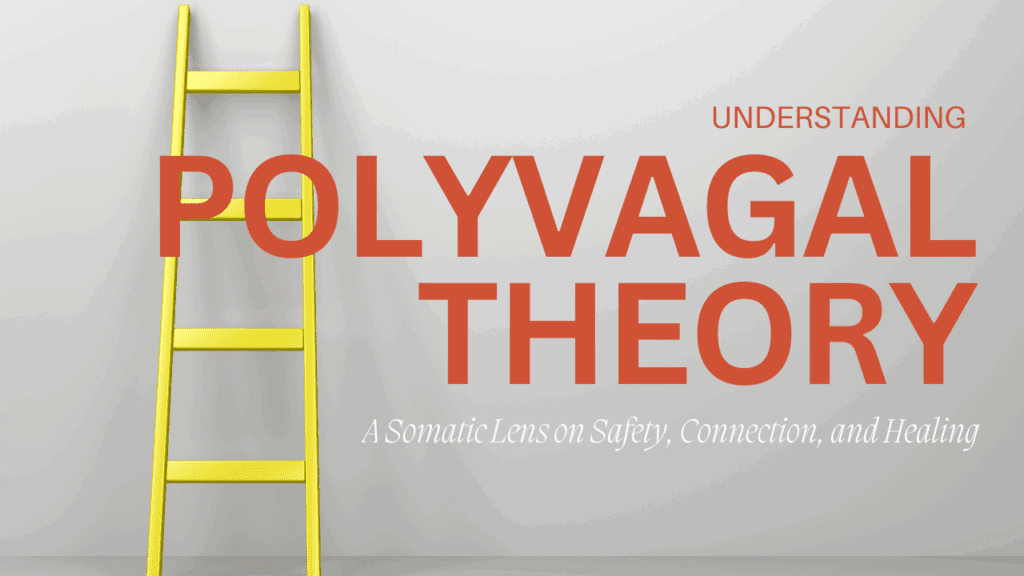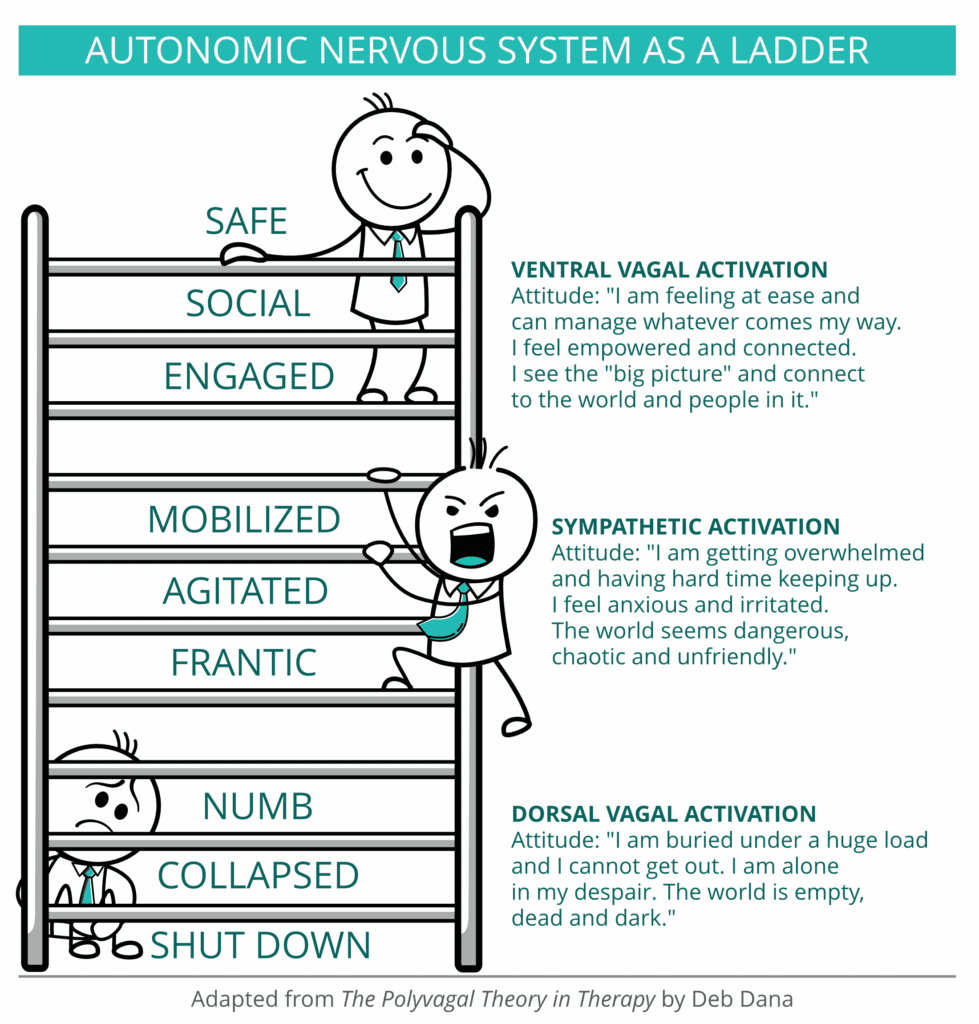
Polyvagal theory is often described as the science of feeling safe enough to fall in love with life while embracing the risks that come with living it fully.
Our autonomic nervous system doesn’t just regulate vital body functions, it also shapes how we love, work, respond to others, and move through the world. With the development of polyvagal theory, Dr. Stephen Porges introduced a new understanding of how the vagus nerve operates, highlighting the ventral vagal (which supports regulation and connection), the dorsal vagal (which triggers shutdown and disconnection), and the sympathetic system (fight or flight). These three form the foundation of how we move through our days.
Key Concepts of Polyvagal Theory
1. Autonomic Hierarchy: Nervous System as a Ladder
The nervous system is organized into a three-tiered hierarchy that evolved over millions of years:
- Dorsal Vagal (Shutdown) – The oldest system (~500 million years old), responsible for immobilization, collapse, or freeze. In survival mode, we may feel drained or numb. Everyday role: digestion and energy conservation.
- Sympathetic (Mobilization) – Evolved next (~400 million years ago), responsible for fight or flight. It mobilizes us into action, often with anger or anxiety. Everyday role: energy, movement, and motivation.
- Ventral Vagal (Connection) – The most recent system (~200 million years old), enabling regulation, connection, play, and engagement. This is where safety lives. When we’re anchored in the ventral vagal state, our system of regulation, we feel grounded, curious, and open. From here, we’re able to meet life’s challenges with flexibility and presence. We’re also connected to ourselves and others.
This sequence is called the autonomic hierarchy, and it offers a roadmap for understanding how our bodies respond to both safety and threat. Imagine this hierarchy as a ladder we move up and down each day.

2. Neuroception: Our Inner Surveillance System
Stephen Porges coined the term neuroception to describe the automatic process by which our nervous system constantly scans for cues of safety or danger. It gathers information from three sources:
- Within the body
- In the external environment
- Through relationships and social connection
Neuroception prompts shifts between nervous system states. And because it’s autonomous (derived from autos meaning “self” and nomos meaning “law”), we don’t always understand why we suddenly feel anxious, numb, or connected, but our body is always paying attention.
3. Co-regulation: We Heal in Connection
While much of modern culture focuses on self-regulation, polyvagal theory reminds us that co-regulation is where it all begins. As social mammals, we’re wired for connection. From birth, we depend on others to help us regulate.
Even as adults, safe relationships help our nervous systems settle. A warm glance, a gentle voice, a steady presence—these are all forms of co-regulation. It’s not a weakness. It’s biology.
In somatic therapy for anxiety and trauma, co-regulation is often foundational, especially when early relationships were inconsistent, unsafe, or absent.
Three Elements for Nervous System Well-Being
To support regulation, we can work with three powerful elements: context, choice, and connection.
Context
No feeling exists in a vacuum. Sadness, joy, fear, anger—all arise within a specific context. The nervous system responds to this context, whether or not it’s clearly named. When that context is unclear or absent, our nervous system falls back on past experiences. This can lead us to sense danger even when none exists. Clear, explicit communication, internally or externally, of our context helps send signals of safety.
Choice
When we understand our nervous system, we can begin to make choices: to move or be still, to speak or stay silent, to engage or retreat. The key is having flexibility, the ability to shift between states— climb up and down the ladder, as needed, rather than getting stuck in one. That flexibility is a sign of a regulated system.
Connection
At the heart of healing lies connection: to ourselves, to others, to nature, and to something greater than ourselves. When connection is ruptured by trauma, grief, or disconnection, we lose access to regulation. Rebuilding connection is often the first step toward feeling safe again.
In somatic therapy for trauma, reconnecting with the body, emotions, and others becomes the groundwork for restoring balance.

A Nervous System Map to Return To
Polyvagal theory doesn’t just explain what’s happening inside us, it gives us a map. One we can return to again and again.
- When we understand what’s happening inside us, we stop blaming ourselves.
- When we learn what safety feels like in our bodies, we find a new baseline.
- When we begin to work with, not against, our nervous system, the path of healing becomes softer, clearer, and more compassionate.
If you’re seeking somatic therapy for anxiety or trauma, I’d be honored to support you. You can reach out or explore more resources on my website.
Source: Anchored: How to befriend your Nervous System Using Polyvagal Theory by Deb Dana